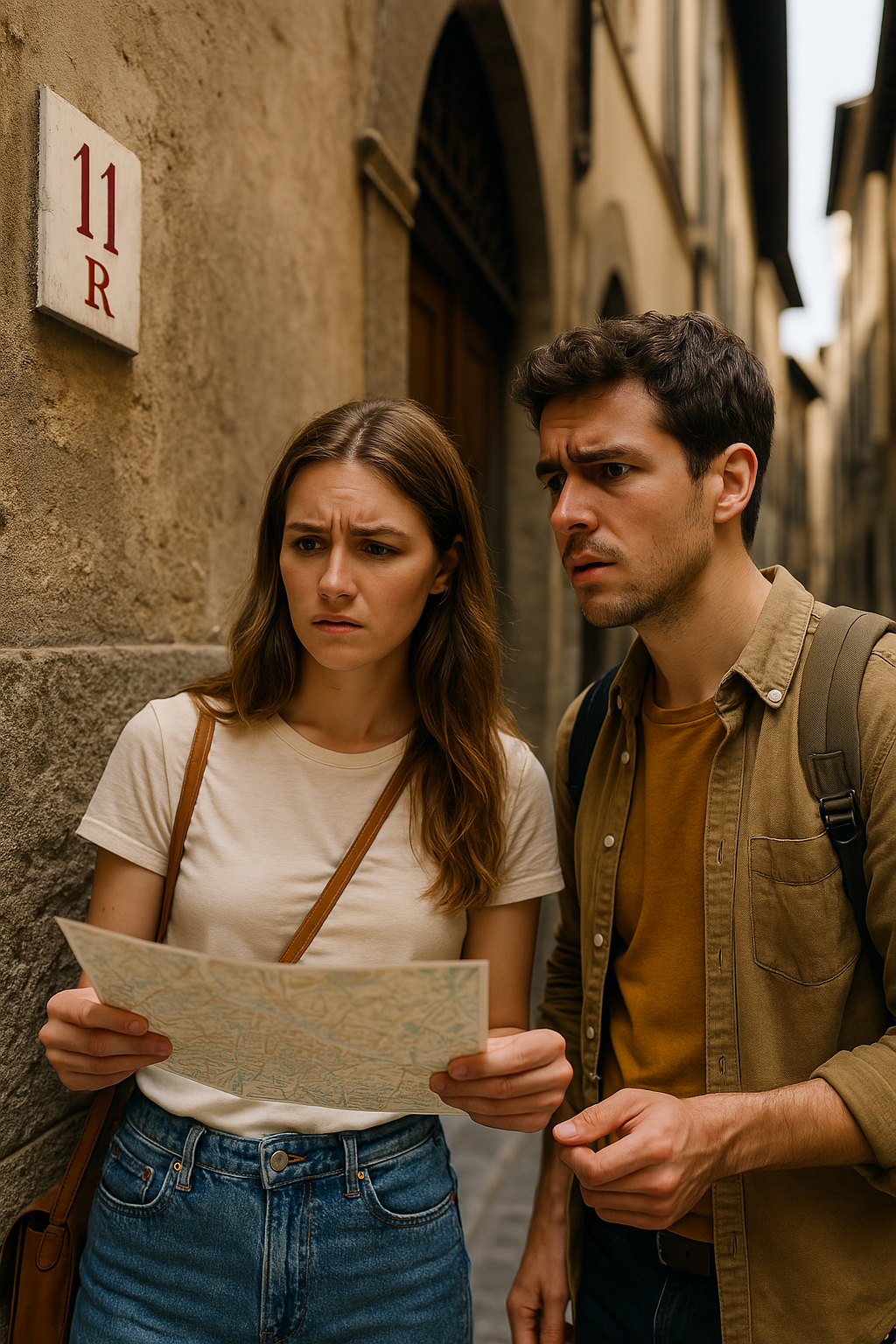Can’t Find That Address in Florence? Look at the Color of the Number.
Florence, with its Renaissance façades and cobblestone seductions, has many ways of politely confusing you. Chief among them: its unique system of double street numbers. Yes—two numbers, often identical in digits, but dramatically different in meaning.
You might be looking for number 21. You find 21. But it’s a wine shop. You’re looking for an apartment. What gives?
Can’t Find That Address in Florence?
Two numbers, often identical in digits, but dramatically different in meaning
Here’s the secret every local knows (and every visitor learns the hard way):
Florence uses two parallel numbering systems. One for humans. One for commerce.
Red numbers (painted or framed in red) are for shops, bars, restaurants—anything with a cash register and opinions on espresso.
Black (or blue) numbers are for residences—silent doorways, lives unfolding quietly behind heavy wooden doors.
So yes, Via dei Neri 6 can be two different places at once. One might be a concept store dedicated to local artisan goods, the other might be your hotel. Context—and color—are everything.
This numerical dualism dates back centuries, a relic of bureaucratic precision and urban stubbornness. It remains in place not out of logic, but because Florence, quite frankly, doesn’t mind being a little difficult. It’s part of her charm.
In Florence, even the street numbers have a flair for drama—red for commerce, black for residence. Two numbers, same street, centuries of confusion
Now that you know, you’ll move through the city like a Florentine—with one eye on the architecture, and the other on the typography.
📍 And if you’re looking for Florence Factory, you’ll find us at Via dei Neri 6/8R.
That’s 6/8 red—and unmistakably worth the detour.


